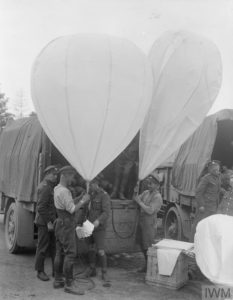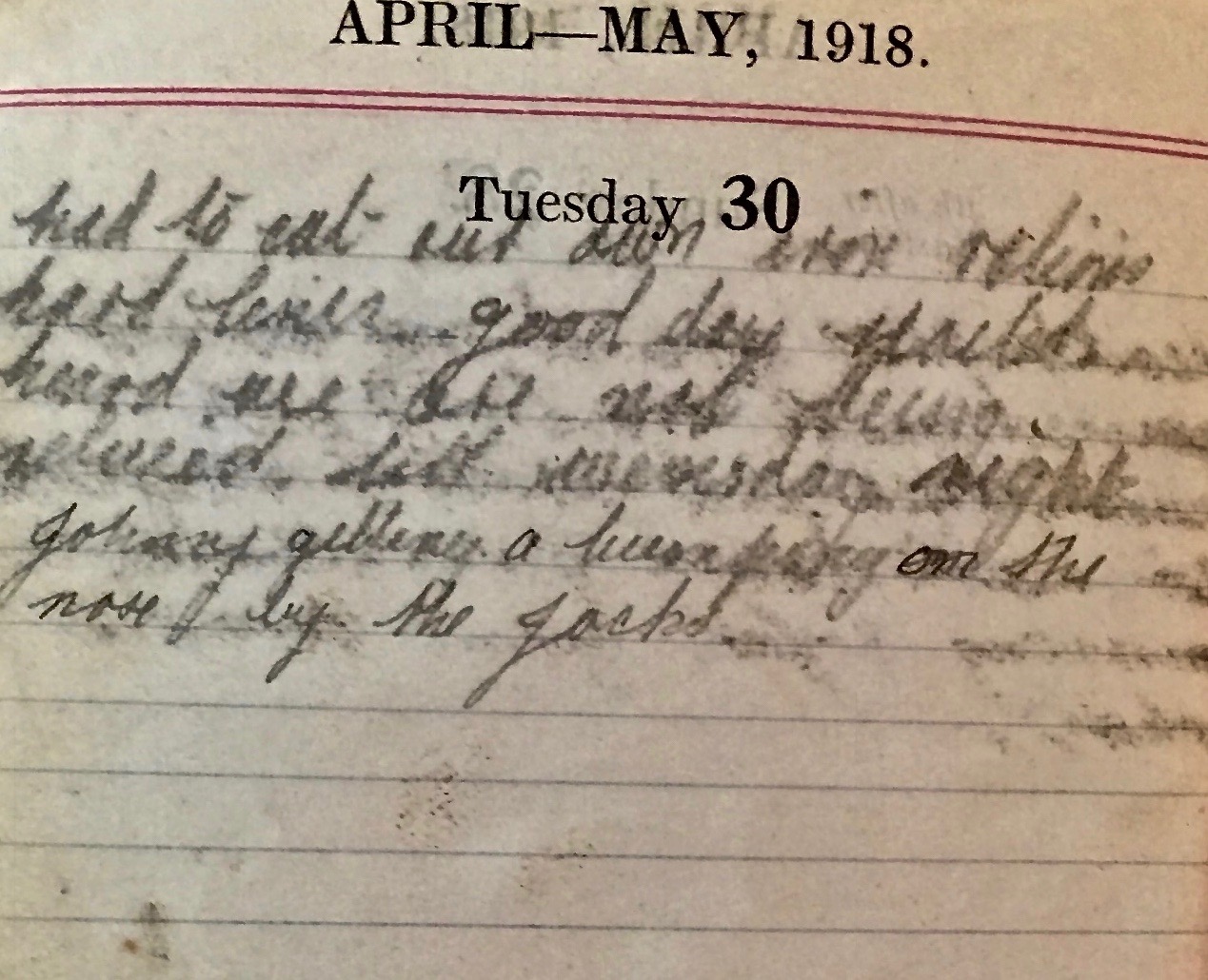Tuesday April 30th, 1918
Had to eat our own iron rations. Hard lines. Good day. We heard were are not being relieved till Wednesday night. Johnny getting a thumping on the nose by the Jacks.
Iron Rations again
Frank is obviously very unhappy that B Company is having to eat its iron rations again. Always hungry, even when not eating emergency supplies, Frank would probably have been surprised by the money being spent by the British Government, ‘The value of the purchases made by the Supplies’ Department in 1917 was approximately £270,000,000 of manufactured goods, including £20,000,000 for the Allies and £113,000,000 worth of raw materials. One of the largest items was preserved meat. The expenditure on this in 1917 was £12,000,000 representing 270,000,000 rations. The army was now consuming three times as much preserved meat as the whole population of the country consumed before the war.’¹
Proclamations
The Battalion War Diary has written a lot about proclamations and posters being left by both sides in various spots in no man’s land. These were important weapons in the propaganda war between the two forces. They also provided an indication on enemy movements in no man’s land and patrols always noted if they had they been picked up or defaced. Today the diary mentions some proclamations left on Goldies I that have disappeared.

Typically, the contents of such posters and fliers were designed to undermine the enemy soldier’s morale. Sometimes they provided information that had been withheld from the troops about setbacks on various fronts. Others were reproduced letters from POW detailing their excellent treatment, or descriptions of civilian suffering at home.
The distribution technique in Salonikaº contrasts with the industrial-strength propaganda campaign that was being waged on the Western Front. Initially distributed by aeroplane, by 1918 small balloons were being used.
‘In March 1918, the Royal Engineers took up the supervision and manufacture of these balloons and releases…the balloons dispatched to France two to three times a week (a staff of nearly 100 girls was specially employed on this work). During the period of March, 1918, to the signing of the Armistice, over 35,000 balloons and 20 million leaflets attached to releases were dispatched from France. As many as 400 balloons, each carrying 500 to 1,500 leaflets, have been sent over the lines in a single day.
The Germans did their utmost to prevent the circulation of the leaflets, and as much as five marks was offered for each leaflet brought to headquarters, but many Germans were captured with leaflets in their possession…’²
The photograph shows men of the Hampshire Regiment and Army Services Corps. They are working on a propaganda balloon distributing unit near Bethune on 4th September 1918. The balloon on the right is being inflated with hydrogen. That on the left is having the ‘release’, with leaflets attached, fastened to its neck.*
13th (Service) Battalion War Diary – 30th April 1918 – Crow Hill
Our artillery as usual. Enemy artillery only slightly active in the sector. Up to midnight enemy put up many lights, both red and white, but no action followed.
Our planes were active all day over enemy lines. Enemy aircraft were more active than usual over his own lines. At 10:00 hrs one enemy plane passed high over our lines flying south. Patrols to various places saw and heard nothing of the enemy. Proclamations which had been left on Goldies I have disappeared. A party of about 25 came from Hut Hill to the works on west slope of Devedzelli Spur at 20:00 hrs was scattered by our artillery.
The trench system on the same spur shows signs of improvement in several places. The trench from the foot of Devedzelli Hill towards those on forward slop of the Spur has been extended about 50 yds. Two AA guns were seen firing on our planes, one directly in rear of large house on right hand side of road through Paljorca ?? Second in rear of point where road disappears over west line. In the early morning and evening smoke was seen rising from behind various hills. Visibility all day was high. For description of sector, see App No 1 of the War Diary for November 1917. The only big changes are in the dispositions, these will be found on the accompanying Lists and Charts (App No 7), this also contains a chart of the Sector Artillery barrages.
Eight belts of wire have been completed around Bowls Barrow, five in front of Dirk, four in front of Westbury and four in front of Glengarry, otherwise work has been on improvement and completion of trenches, bombproof and shelters. Work on screens is still going on.
The health of the Battalion is good. The effective strength (Appendix No 8) of the Battalion is 32 Officers and 932 other ranks.
JFB Morrell, Lt Col, Commanding 13th (S) Bn Manchester Regiment, 1-5-18
References & Further Reading
¹’Committee of Supply’ about the Army Estimates, Mr Macpherson’s comments, The Guardian, February 21st, 1918, page 8
¹ ‘The Secrets of Crewe House‘ by Sir Campbell Stuart KBE, 1920
² Quotation from article by Captain LC Pittmann in an article ‘Propaganda by Balloon’ in Royal Engineer’s Journal 1919. Source: Allied Psyop of WWI³
º Though leaflets were dropped by the RAF in Salonika, it was on a lesser scale
* Q11320, copyright Imperial War Museums



One thought on “Proclamations – April 30th, 1918”
Comments are closed.